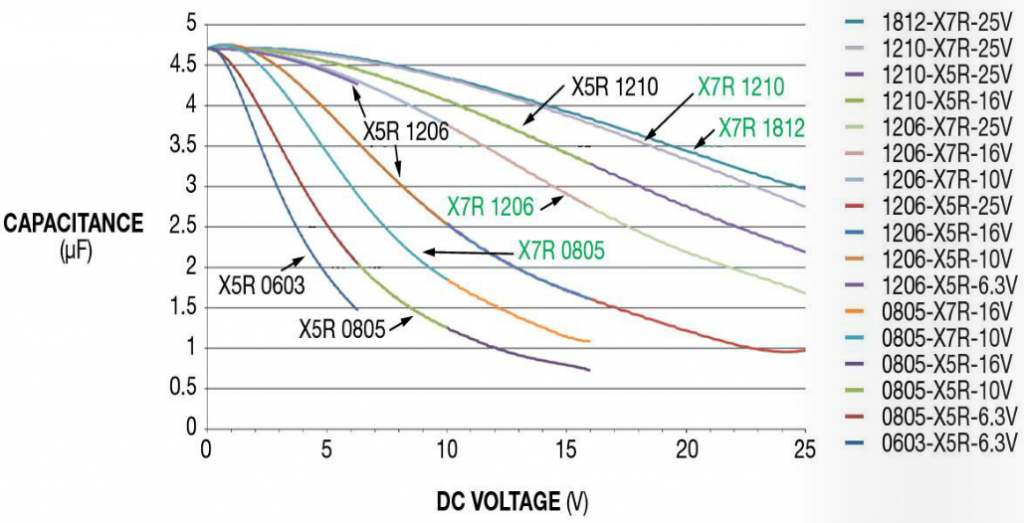EDN Europe March issue had signal integrity as the key theme. I think that is great and we need more stories like that, but that is not a big surprise I guess. Two stories caught my eye: “Signal-Integrity Issues on the Rise” and “Why your 4.7-uF ceramic cap becomes a 0.33-uF cap”.
The first is a journalist interviewing test equipment manufacturers and SI gurus. As with any story written by a journalist interviewing experts, there are a few slips in the text. Some are amusing and some are just plain wrong. Examples include: “EMI and crosstalk is closing the eye” – Yes, crosstalk will contribute to that. EMI will not unless you have a very uncommon setup that I can only imagine.
The second article is by an FAE from MAXIM who clearly did some actual work himself to understand the situation with capacitor ceramics. If you look at this plot, you get the point I think:
 The central thing to learn from this article may not be that ceramic capacitors are DC voltage sensitive, because you probably already knew that. And the ones with high capacity in a very small package are often the worst. And X5R is worse than X7R. And Y5V is very bad. No big surprise either.
The central thing to learn from this article may not be that ceramic capacitors are DC voltage sensitive, because you probably already knew that. And the ones with high capacity in a very small package are often the worst. And X5R is worse than X7R. And Y5V is very bad. No big surprise either.
The thing to really pay attention to is the fact that any ceramic that satisfies the temperature characteristic can be called X7R. No matter how it behaves across DC (bias) voltage. So you really need to specify a specific manufacturer and part number to get what you want.
Very good article – well worth the read. And thanks to Phil for bringing it to my attention – please be precise when you specify bypass capacitors.
 M.Sc.EE, SI Consultant
M.Sc.EE, SI Consultant
Leave a Reply